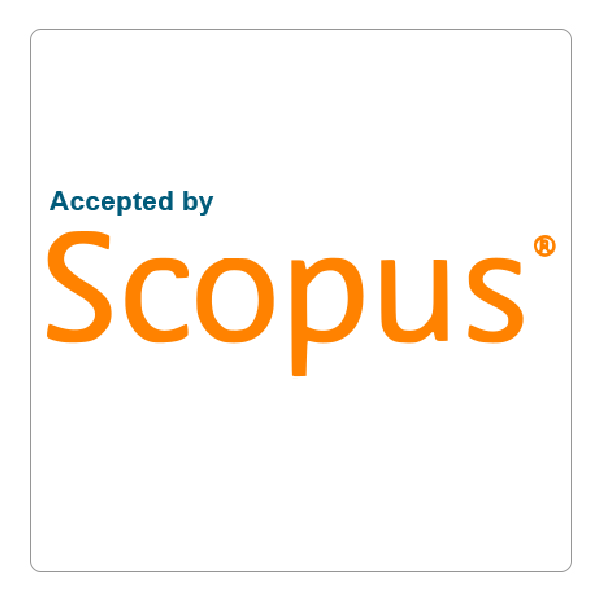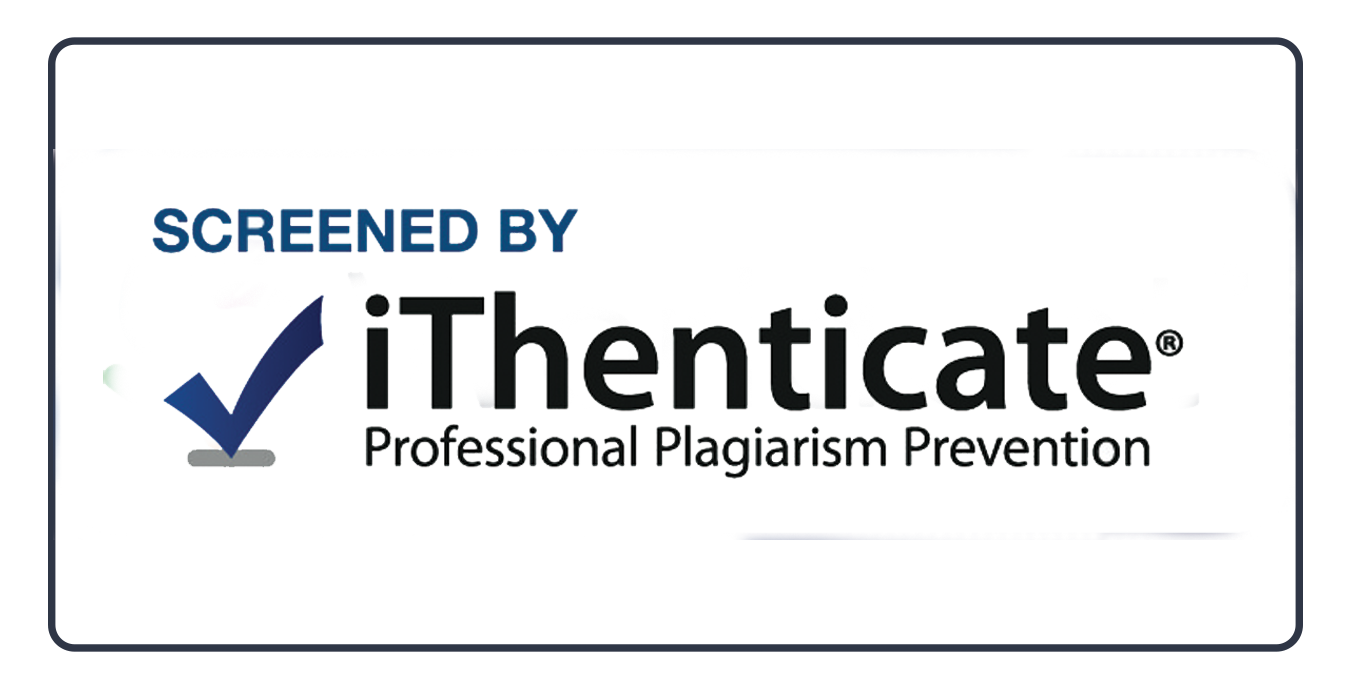How to Cite This Article
Aziz, Shuokr Qarani; Ismael, Sarwah Othman; and Salih, Khalat Khalid Muhammad
(2025)
"Nanotechnology in Wastewater Treatment: Efficiency Review, Cost Analysis, and Reusing,"
Polytechnic Journal: Vol. 15:
Iss.
2, Article 5.
DOI: https://doi.org/10.59341/2707-7799.1863
Document Type
Review
Abstract
The increasing worldwide water shortage demands the immediate implementation of advanced, sustainable wastewater treatment solutions. Nanotechnology provides promising options through nanomaterials, including metal oxides, magnetic nanoparticles (MNPs), and carbon-based composites, which show high removal efficiencies of 50–98% for organic contaminants and 80–99% for inorganic pollutants. This review analyzes various nanomaterials used in wastewater treatment by examining their functional mechanisms, including adsorption, catalytic degradation, and membrane-based separation, and assesses their performance relative to traditional methods. It addresses the major barriers to large-scale implementation, including high production expenses, ecological dangers, and scalability problems. The paper stresses the necessity of interdisciplinary collaboration between academia, industry, and policymakers to develop sustainable nanotechnology solutions that are economically viable. The successful adoption of nanomaterials in water management practices depends on balancing performance capabilities, safety standards, and scalability requirements. This review demonstrates how nanotechnology can transform wastewater pollution management through economic and ecological assessments.
Receive Date
05/02/2025
Revise Date
02/07/2025
Accept Date
22/07/2025
Publication Date
9-17-2025
References
1 Amin MT, Alazba AA, Manzoor U. A review of removal of pollutants from water/wastewater using different types of nanomaterials. Adv Mater Sci Eng 2014;2014:1e24. https:// doi.org/10.1155/2014/825910.
2 Abbas SH, Ismail IM, Mostafa TM, Sulaymon AH. Biosorption of heavy metals: a review. J Chem Sci Technol 2014; 3:74e102.
3 Aziz SQ, Ali SM. Characterization of municipal and dairy wastewaters with 30 quality parameters and potential wastewater treatment by biological trickling filters. Int J Green Energy 2017;14:1156e62. https://doi.org/10.1080/ 15435075.2017.1370594.
4 Aziz S, Ali S. Characteristics and potential treatment technologies for different kinds of wastewaters. Zanco J Pure Appl Sci 2018;30:122e34. https://doi.org/10.21271/ZJPAS.30. s1.14.
5 Aziz SQ, Saleh SM, Omar IA. Essential treatment processes for industrial wastewaters and reusing for irrigation. Zanco J Pure Appl Sci 2019;31:269e75. https://doi.org/10.21271/zjpas.
6 Aziz SQ, Omar IA, Bashir MJ, Mojiri A. Stage by stage design for primary, conventional activated sludge, SBR and MBBR units for residential wastewater treatment and reusing. Adv Environ Res 2020;9:233e49. https://doi.org/10.12989/aer.2020. 9.4.233.
7 Aziz SQA, Bruska SMB. Applying mass balance dilution technique for wastewater disposal to Greater-Zab river in Erbil, Kurdistan region-Iraq. Recycl Sustain Develop 2021;14: 31e9. https://doi.org/10.5937/ror2101031A.
8 Bottero JY, Rose J, Wiesner MR. Nanotechnologies: tools for sustainability in a new wave of water treatment processes. Integrated Environ Assess Manag: Int J 2006;2:391e5. https:// doi.org/10.1002/ieam.5630020411.
9 Goh PS, Ismail AF. is interplay between nanomaterial and membrane technology the way forward for desalination? J Chem Tech Biotechnol 2015;90:971e80. https://doi.org/10. 1002/jctb.4531.
10 Jeevanandam J, Barhoum A, Chan YS, Dufresne A, Danquah MK. Review on nanoparticles and nanostructured materials: history, sources, toxicity and regulations. Beilstein J Nanotechnol 2018;9:1050e74. https://doi.org/10.3762/ bjnano.9.98.
11 Shukla P. Microbial nanotechnology for bioremediation of industrial wastewater. Front Microbiol 2020;11:590631. https://doi.org/10.3389/fmicb.2020.590631.
12 Das C, Sen S, Singh T, Ghosh T, Paul SS, Kim TW, et al. Green synthesis, characterization and application of natural product coated magnetite nanoparticles for wastewater treatment. Nanomaterials 2020;10:1615. https://doi.org/10. 3390/nano10081615.
13 Gabr NM, Hussien K, Abdel-Hamid I. A review of study on removal of some biological and chemicalpollutants from water/wastewater using different types of nanomaterials in Turkmenistan. Zagazig J Agri Res 2021;48:1069e82. https:// doi.org/10.21608/zjar.2021.204546.
14 Alalwan HA, Augustine LJ, Hudson BG, Abeysinghe JP, Gillan EG, Mason SE, et al. Linking solid-state reduction mechanisms to size-dependent reactivity of metal oxide oxygen carriers for chemical looping combustion. ACS Appl Energy Mater 2021;4:1163e72. https://pubs.acs.org/doi/10. 1021/acsaem.0c02029?goto¼supporting-info&articleRef¼test.
15 Alalwan HA, Mohammed MM, Sultan AJ, Abbas MN, Ibrahim TA, Aljaafari HA, et al. Adsorption of methyl green stain from aqueous solutions using non-conventional adsorbent media: Isothermal kinetic and thermodynamic studies. Bioresour Technol Rep 2021;14:100680. https://doi. org/10.1016/j.biteb.2021.100680.
16 Abdulkhaleq Alalwan H, Alminshid AH, Mustafa Mohammed M, Mohammed MF, Hatem Shadhar M. Reviewing of using nanomaterials for wastewater treatment. Pollution 2022;8:995e1013. https://doi.org/10.22059/poll.2022. 337436.1329.
17 Kalash K, Kadhom M, Al-Furaiji M. Thin film nanocomposite membranes filled with MCM-41 and SBA-15 nanoparticles for brackish water desalination via reverse osmosis. Environ Technol Innov 2020;20:101101. https://doi.org/10.1016/j.eti. 2020.101101.
18 Al-Furaiji MH, Kalash KR, Kadhom MA, Alsalhy QF. Evaluation of polyethersulfone microfiltration membranes embedded with MCM-41 and SBA-15 particles for turbidity removal. Desalination Water Treat 2021;215:50e9. https:// www.deswater.com/DWT_articles/vol_215_papers/215_ 2021_50.pdf.
19 Singh S, Batra R. Nanotechnology in wastewater treatment: A review. Novel Appl Poly Waste Manage 2018:173e82. https:// doi.org/10.1201/9781315365848.
20 Almuktar SA, Abed SN, Scholz M. Wetlands for wastewater treatment and subsequent recycling of treated effluent: a review. Environ Sci Pollut Control Ser 2018;25:23595e623. https://doi.org/10.1007/s11356-018-2629-3.
21 Fahad A, Radin Mohamed R, Saphira M, Radhi B, AlSahari M. Wastewater and its treatment techniques: an ample review. Indian J Sci Technol 2019;12:1e13. https://doi. org/10.17485/ijst%2F2019%2Fv12i25%2F146059.
22 Ismael SO, Kakil K, Ahmed B, Aziz S. Wastewater management as a part of solution for water resources problem in Erbil City. Zanco J Pure Appl Sci 2024;36(5):95e103. https:// doi.org/10.62877/17-IJCBS-24-25-19-17.
23 Shon H, Vigneswaran S, Kandasamy J, Cho J. Characteristics of effluent organic matter in wastewater. Oxford: Eolss; 2007.
24 Punia P, Bharti MK, Chalia S, Dhar R, Ravelo B, Thakur P, et al. Recent advances in synthesis, characterization, and applications of nanoparticles for contaminated water treatment-A review. Ceram Int 2021;47:1526e50. https://doi.org/ 10.1016/j.ceramint.2020.09.050.
25 Sanni SE, Oni BA, Okore EE, Pandya S. Recent advances in the use of biogenic nanomaterials and photocatalysts for wastewater treatment: challenges and future prospects. Front Nanotechnol 2024;6:1469309. https://doi.org/10.3389/fnano. 2024.1469309.
26 Saud A, Gupta S, Allal A, Preud’Homme H, Shomar B, Zaidi SJ. Progress in the sustainable development of biobased (nano) materials for application in water treatment technologies. ACS Omega 2024;9(27):29088e113. https://doi. org/10.1021/acsomega.3c08883.
27 Shukla S, Khan R, Daverey A. Synthesis and characterization of magnetic nanoparticles, and their applications in wastewater treatment: A review. Environ Technol Innov 2021;24: 101924. https://doi.org/10.1016/j.eti.2021.101924.
28 Amrane A, Mohan D, Nguyen TA, Assadi AA, Yasin G. Nanomaterials for soil remediation. Elsevier; 2020.
29 Qu X, Alvarez PJ, Li Q. Applications of nanotechnology in water and wastewater treatment. Water Res 2013;47:3931e46. https://doi.org/10.1016/j.watres.2012.09.058.
30 Eskandarloo H, Kierulf A, Abbaspourrad A. Nano-and micromotors for cleaning polluted waters: focused review on pollutant removal mechanisms. Nanoscale 2017;9:13850e63. https://doi.org/10.1039/C7NR05494G.
31 Chen Z, Wang T, Jin X, Chen Z, Megharaj M, Naidu R. Multifunctional kaolinite-supported nanoscale zero-valent iron used for the adsorption and degradation of crystal violet in aqueous solution. J Colloid Interface Sci 2013;398:59e66. https://doi.org/10.1016/j.jcis.2013.02.020.
32 Lakshmanan R, Sanchez-Dominguez M, Matutes-Aquino JA, Wennmalm S, Kuttuva Rajarao G. Removal of total organic carbon from sewage wastewater using poly (ethylenimine)- functionalized magnetic nanoparticles. Langmuir 2014;30: 1036e44. https://doi.org/10.1021/la404076n.
33 Huang X, Xu C, Ma J, Chen F. Ionothermal synthesis of Cudoped Fe3O4 magnetic nanoparticles with enhanced peroxidase-like activity for organic wastewater treatment. Adv Powder Technol 2018;29:796e803. https://doi.org/10.1016/j. apt.2017.12.025.
34 Yu C, He H, Liu X, Zeng J, Liu Z. Novel SiO2 nanoparticledecorated BiOCl nanosheets exhibiting high photocatalytic performances for the removal of organic pollutants. Chin J Catal 2019;40:1212e21. https://doi.org/10.1016/S1872-2067(19) 63359-0.
35 Taghipour T, Karimipour G, Ghaedi M, Asfaram A, Javadian H, Sabzehmeidani MM, et al. Photoelectro-Fenton/ photocatalytic process for decolorization of an organic compound by Ag: Cd-1, 4-BDOAH2 nano-photocatalyst: Response surface modeling and central composite design optimization. J Mol Liq 2021;335:113689. https://doi.org/10. 1016/j.molliq.2020.113689.
36 Cheraghi R, Abrishamkar M, Jahromi HJ, Hoseini F. Synthesized Polyetheretherketone/Polyvinylalcohol Nanocomposite Modified with Zinc Oxide Nanoparticles: As an Effective Adsorbent for Removal of Arsenic (III) ion from Wastewater. Desalination Water Treat 2024:100008. https:// doi.org/10.1016/j.dwt.2024.100008.
37 Din MI, Khalid R, Hussain Z, Gul S, Mujahid A. Synthesis and Characterization of Cobalt Doped Zinc oxide Nanoparticles and their Application for Catalytic Reduction of Methylene Blue Dye. Desalination Water Treat 2024:100002. https://doi.org/10.1016/j.dwt.2024.100002.
38 Goudjil MB, Dali H, Zighmi S, Mahcene Z, Bencheikh SE. Photocatalytic degradation of methylene blue dye with biosynthesized Hematite a-Fe2O3 nanoparticles under UVIrradiation. Desalination Water Treat 2024:100079. https:// doi.org/10.1016/j.dwt.2024.100079.
39 Ali NS, Khader EH, Abdulrahman MA, Salih IK, Albayati TM. Removal of anionic azo dye from wastewater using Fe3O4 magnetic nanoparticles adsorbents in a batch system. Desalination Water Treat 2024:100033. https://doi. org/10.1016/j.dwt.2024.100033.
40 Jayalakshmi R, Anitha P, Sudha R, Priya P. Methylene blue and Methyl orange removal from wastewater by magnetic adsorbent based on activated carbon synthesised from watermelon shell. Desalination Water Treat 2024:100040. https://doi.org/10.1016/j.dwt.2024.100040.
41 Rani R, Sharma S, Pirota K, Knobel M, Thakur S, Singh M. Effect of zinc concentration on the magnetic properties of cobaltezinc nanoferrite. Ceram Int 2012;38:2389e94. https:// doi.org/10.1016/j.ceramint.2011.11.004.
42 Patil S, Patil R, Chougule B. DC electrical and thermoelectric power measurement studies of NieMgeZneCo ferrites. J Magn Magn Mater 2013;335:109e13. https://doi.org/10.1016/j. jmmm.2012.12.011.
43 Dascalu G, Popescu T, Feder M, Caltun O. Structural, electric and magnetic properties of CoFe1. 8RE0. 2O4 (RE¼ Dy, Gd, La) bulk materials. J Magn Magn Mater 2013;333:69e74. https://doi.org/10.1016/j.jmmm.2012.12.048.
44 Marchetti P, Jimenez Solomon MF, Szekely G, Livingston AG. Molecular separation with organic solvent nanofiltration: a critical review. Chem Rev 2014;114: 10735e806. https://doi.org/10.1021/cr500006j.
45 Mahalakshmi S, Srinivasamanja K, Nithiyanantham S. Electrical properties of nanophase ferrites doped with rare earth ions. J Supercond Nov Magnetism 2014;27:2083e8. https:// doi.org/10.1007/s10948-014-2551-y.
46 Murugesan C, Chandrasekaran G. Impact of Gd 3+ substitution on the structural, magnetic and electrical properties of cobalt ferrite nanoparticles. RSC Adv 2015;5(90):73714e25. https://doi.org/10.1039/C5RA14351A.
47 Gautam RK, Tiwari I. Humic acid functionalized magnetic nanomaterials for remediation of dye wastewater under ultrasonication: Application in real water samples, recycling and reuse of nanosorbents. Chemosphere 2020;245:125553. https://doi.org/10.1016/j.chemosphere.2019.125553.
48 Adekunle AS, Oyekunle JA, Durosinmi LM, Oluwafemi OS, Olayanju DS, Akinola AS, et al. The potential of cobalt and cobalt oxide nanoparticles as nanocatalyst towards dyes degradation in wastewater. Nano-Struct Nano-Objects 2020; 21:100405. https://doi.org/10.1016/j.nanoso.2019.100405.
49 D'Cruz B, Madkour M, Amin MO, Al-Hetlani E. Efficient and recoverable magnetic AC-Fe3O4 nanocomposite for rapid removal of promazine from wastewater. Mater Chem Phys 2020;240:122109. https://doi.org/10.1016/j.matchemphys.2019. 122109.
50 Khodadadi M, Al-Musawi TJ, Kamani H, Silva MF, Panahi AH. The practical utility of the synthesis FeNi3@ SiO2@ TiO2 magnetic nanoparticles as an efficient photocatalyst for the humic acid degradation. Chemosphere 2020;239:124723. https://doi.org/10.1016/j.chemosphere.2019. 124723.
51 Kumari M, Gupta SK. A novel process of adsorption cum enhanced coagulation-flocculation spiked with magnetic nanoadsorbents for the removal of aromatic and hydrophobic fraction of natural organic matter along with turbidity from drinking water. J Clean Prod 2020;244:118899. https:// doi.org/10.1016/j.jclepro.2019.118899.
52 Mousavi M, Ghorbani-Moghadam T, Kompany A. Investigation of methyl orange photocatalytic degradation using La0. 7Sr1. 3CoO4 Ruddlesden-Popper nanoparticles. Ceram Int 2021;47:20651e8. https://doi.org/10.1016/j.ceramint.2021. 04.075.
53 Stanley R, Jebasingh JA, Stanley PK, Ponmani P, Shekinah M, Vasanthi J. Excellent Photocatalytic degradation of Methylene Blue, Rhodamine B and Methyl Orange dyes by Ag-ZnO nanocomposite under natural sunlight irradiation. Optik 2021;231:166518. https://doi.org/10.1016/j.ijleo.2021.166518.
54 Javanbakht V, Mohammadian M. Photo-assisted advanced oxidation processes for efficient removal of anionic and cationic dyes using Bentonite/TiO2 nano-photocatalyst immobilized with silver nanoparticles. J Mol Struct 2021;1239: 130496. https://doi.org/10.1016/j.molstruc.2021.130496.
55 Cani D, Van der Waal JC, Pescarmona PP. Highly-accessible, doped TiO2 nanoparticles embedded at the surface of SiO2 as photocatalysts for the degradation of pollutants under visible and UV radiation. Appl Catal Gen 2021;621:118179. https://doi.org/10.1016/j.apcata.2021.118179.
56 Niu Z, Tao X, Huang H, Qin X, Ren C, Wang Y, Shan B, Liu Y. Green synthesis of magnetically recyclable Mn0. 6Zn0. 4Fe2O4@ Zn1-xMnxS composites from spent batteries for visible light photocatalytic degradation of phenol. Chemosphere 2022;287:132238. https://doi.org/10.1016/j.chemosphere.2021.132238.
57 Nordin AH, Wong S, Ngadi N, Zainol MM, Abd Latif NAF, Nabgan W. Surface functionalization of cellulose with polyethyleneimine and magnetic nanoparticles for efficient removal of anionic dye in wastewater. J Environ Chem Eng 2021;9:104639. https://doi.org/10.1016/j.jece.2020.104639.
58 Peralta ME, Martire DO, Moreno MS, Parolo ME, Carlos L. Versatile nanoadsorbents based on magnetic mesostructured silica nanoparticles with tailored surface properties for organic pollutants removal. J Environ Chem Eng 2021;9: 104841. https://doi.org/10.1016/j.jece.2020.104841.
59 Wadhawan S, Jain A, Nayyar J, Mehta SK. Role of nanomaterials as adsorbents in heavy metal ion removal from waste water: A review. J Water Proc Eng 2020;33:101038. https://doi.org/10.1016/j.jwpe.2019.101038.
60 Sharma M, Singh J, Hazra S, Basu S. Adsorption of heavy metal ions by mesoporous ZnO and TiO2@ ZnO monoliths: adsorption and kinetic studies. Microchem J 2019;145:105e12. https://doi.org/10.1016/j.microc.2018.10.026.
61 El-Nagar DA, Massoud SA, Ismail SH. Removal of some heavy metals and fungicides from aqueous solutions using nano-hydroxyapatite, nano-bentonite and nanocomposite. Arab J Chem 2020;13:7695e706. https://doi.org/10.1016/j. arabjc.2020.09.005.
62 Nayak MC, Isloor AM, Lakshmi B, Marwani HM, Khan I. Polyphenylsulfone/multiwalled carbon nanotubes mixed ultrafiltration membranes: Fabrication, characterization and removal of heavy metals Pb2+, Hg2+, and Cd2+ from aqueous solutions. Arab J Chem 2020;13:4661e72. https://doi. org/10.1016/j.arabjc.2019.10.007.
63 Rajendran S, Priya A, Kumar PS, Hoang TK, Sekar K, Chong KY, et al. A critical and recent developments on adsorption technique for removal of heavy metals from wastewater-A review. Chemosphere 2022;303:135146. https:// doi.org/10.1016/j.chemosphere.2022.135146.
64 Nadaf SJ, Jadhav NR, Naikwadi HS, Savekar PL, Sapkal ID, Kambli MM, et al. Green synthesis of gold and silver nanoparticles: Updates on research, patents, and future prospects. OpenNano 2022;8:100076. https://doi.org/10.1016/j.onano. 2022.100076.
65 Han Q, Liu F, Wang C, Tang Z, Peng C, Tan Y. Polyethylene glycol functionalized Fe3O4@ MIL-101 (Cr) for the efficient removal of heavy metals from Ligusticum chuanxiong Hort. Arab J Chem 2023;16:104635. https://doi.org/10.1016/j.arabjc. 2023.104635.
66 Hosseinkhani O, Hamzehlouy A, Dan S, Sanchouli N, Tavakkoli M, Hashemipour H. Graphene oxide/ZnO nanocomposites for efficient removal of heavy metal and organic contaminants from water. Arab J Chem 2023;16:105176. https://doi.org/10.1016/j.arabjc.2023.105176.
67 Bumajdad A, Hasila P. Surface modification of date palm activated carbonaceous materials for heavy metal removal and CO2 adsorption. Arab J Chem 2023;16:104403. https:// doi.org/10.1016/j.arabjc.2022.104403.
68 Markeb AA, Moral-Vico J, Sanchez A, Font X. Optimization of lead (II) removal from water and wastewater using a novel magnetic nanocomposite of aminopropyl triethoxysilane coated with carboxymethyl cellulose cross-linked with chitosan nanoparticles. Arab J Chem 2023;16:105022. https://doi. org/10.1016/j.arabjc.2023.105022.
69 Giri S, Das N, Pradhan G. Synthesis and characterization of magnetite nanoparticles using waste iron ore tailings for adsorptive removal of dyes from aqueous solution. Colloids Surf A Physicochem Eng Asp 2011;389:43e9. https://doi.org/ 10.1016/j.colsurfa.2011.08.052.
70 Prathapani S, Vinitha M, Jayaraman TV, Das D. Effect of Er doping on the structural and magnetic properties of cobaltferrite. J Appl Phys 2014;115. https://doi.org/10.1063/1. 4854915.
71 Bagheri M, Mahjoub AR, Khodadadi AA, Mortazavi Y. Fast photocatalytic degradation of congo red using CoO-doped bGa 2 O 3 nanostructures. RSC Adv 2014;4:33262e8. https:// doi.org/10.1039/C4RA04668D.
72 Reddy DHK, Yun Y-S. Spinel ferrite magnetic adsorbents: alternative future materials for water purification? Coord Chem Rev 2016;315:90e111.
73 Su H, Ye Z, Hmidi N. High-performance iron oxideegraphene oxide nanocomposite adsorbents for arsenic removal. Colloids Surf A Physicochem Eng Asp 2017;522: 161e72. https://doi.org/10.1016/j.colsurfa.2017.02.065.
74 Hua Y, Xiao J, Zhang Q, Cui C, Wang C. Facile synthesis of surface-functionalized magnetic nanocomposites for effectively selective adsorption of cationic dyes. Nanoscale Res Lett 2018;13:1e9. https://doi.org/10.1186/s11671-018-2476-7.
75 Ottenhall A, Henschen J, Illergård J, Ek M. Cellulose-based water purification using paper filters modified with polyelectrolyte multilayers to remove bacteria from water through electrostatic interactions. Environ Sci J Integr Environ Res: Water Res Technol 2018;4(12):2070e9. https://doi. org/10.1039/C8EW00514A.
76 Kong Q, Wei J, Hu Y, Wei C. Fabrication of terminal amino hyperbranched polymer modified graphene oxide and its prominent adsorption performance towards Cr (VI). J Hazard Mater 2019;363:161e9. https://doi.org/10.1016/j.jhazmat.2018. 09.084.
77 Wells AI, Coyne CB. Enteroviruses: a gut-wrenching game of entry, detection, and evasion. Viruses 2019;11:460. https://doi. org/10.3390/v11050460.
78 Agboola O, Popoola P, Sadiku R, Sanni SE, Fayomi SO, Fatoba OS. Nanotechnology in wastewater and the capacity of nanotechnology for sustainability. Environmental Nanotechnology 2020;3:1e45. https://doi.org/10.1007/978-3-030- 26672-1_1.
79 Xu Y, Li X, Zhu B, Liang H, Fang C, Gong Y, et al. Characteristics of pediatric SARS-CoV-2 infection and potential evidence for persistent fecal viral shedding. Nat Med 2020;26: 502e5. https://doi.org/10.1038/s41591-020-0817-4.
80 Bhalla N, Pan Y, Yang Z, Payam AF. Opportunities and challenges for biosensors and nanoscale analytical tools for pandemics: COVID-19. ACS Nano 2020;14:7783e807. https:// pubs.acs.org/doi/full/10.1021/acsnano.0c04421.
81 Masjedi A, Askarizadeh E, Baniyaghoob S. Magnetic nanoparticles surface-modified with tridentate ligands for removal of heavy metal ions from water. Mater Chem Phys 2020;249:122917. https://doi.org/10.1016/j.matchemphys.2020. 122917.
82 Almomani F, Bhosale R, Khraisheh M, Almomani T. Heavy metal ions removal from industrial wastewater using magnetic nanoparticles (MNP). Appl Surf Sci 2020;506:144924. https://doi.org/10.1016/j.apsusc.2019.144924.
83 Govarthanan M, Jeon C-H, Jeon Y-H, Kwon J-H, Bae H, Kim W. Non-toxic nano approach for wastewater treatment using Chlorella vulgaris exopolysaccharides immobilized in iron-magnetic nanoparticles. Int J Biol Macromol 2020;162: 1241e9. https://doi.org/10.1016/j.dwt.2024.100079.
84 Vicente-Martínez Y, Caravaca M, Soto-Meca A. Total removal of Hg (II) from wastewater using magnetic nanoparticles coated with nanometric Ag and functionalized with sodium 2-mercaptoethane sulfonate. Environ Chem Lett 2020;18:975e81. https://doi.org/10.1007/s10311-020-00987-x.
85 Peigneux A, Puentes-Pardo JD, Rodríguez-Navarro AB, Hincke MT, Jimenez-Lopez C. Development and characterization of magnetic eggshell membranes for lead removal from wastewater. Ecotoxicol Environ Saf 2020;192:110307. https://doi.org/10.1016/j.ecoenv.2020.110307.
86 Mehrabi N, Haq UFA, Reza MT, Aich N. Application of deep eutectic solvent for conjugation of magnetic nanoparticles onto graphene oxide for lead (II) and methylene blue removal. J Environ Chem Eng 2020;8:104222. https://doi.org/ 10.1016/j.jece.2020.104222.
87 Devatha C, Shivani S. Novel application of maghemite nanoparticles coated bacteria for the removal of cadmium from aqueous solution. J Environ Manag 2020;258:110038. https://doi.org/10.1016/j.jenvman.2019.110038.
88 Bakhshi Nejad S, Mohammadi A. Epoxy-triazinetrionefunctionalized magnetic nanoparticles as an efficient magnetic nanoadsorbent for the removal of malachite green and Pb (II) from aqueous solutions. J Chem Eng Data 2020;65: 2731e42. https://pubs.acs.org/doi/10.1021/acs.jced.0c00063? goto¼supporting-info&articleRef¼test.
89 Saravanan A, Kumar PS, Govarthanan M, George CS, Vaishnavi S, Moulishwaran B, et al. Adsorption characteristics of magnetic nanoparticles coated mixed fungal biomass for toxic Cr (VI) ions in aquatic environment. Chemosphere 2021;267:129226. https://doi.org/10.1016/j.chemosphere.2020. 129226.
90 Yang Y, Zhang Y, Wang G, Yang Z, Xian J, Yang Y, et al. Adsorption and reduction of Cr (VI) by a novel nanoscale FeS/chitosan/biochar composite from aqueous solution. J Environ Chem Eng 2021;9:105407. https://doi.org/10.1016/j. jece.2021.105407.
91 Yin L, Mi N, Yao Y-R, Li J, Zhang Y, Yang S-G, et al. Efficient removal of Cr (VI) by tannic acid-modified FeS nanoparticles: Performance and mechanisms. Water Sci Eng 2021;14:210e8. https://doi.org/10.1016/j.wse.2021.08.006.
92 Zhou C, Han C, Min X, Yang T. Simultaneous adsorption of As (V) and Cr (VI) by zeolite supporting sulfide nanoscale zero-valent iron: Competitive reaction, affinity and removal mechanism. J Mol Liq 2021;338:116619. https://doi.org/10. 1016/j.molliq.2021.116619.
93 Yakout AA, Khan ZA. High performance Zr-MnO2@ reduced graphene oxide nanocomposite for efficient and simultaneous remediation of arsenates As (V) from environmental water samples. J Mol Liq 2021;334:116427. https://doi.org/10. 1016/j.molliq.2021.116427.
94 Moustafa H, Isawi H, Abd El Wahab S. Utilization of PVA nano-membrane based synthesized magnetic GO-Ni-Fe2O4 nanoparticles for removal of heavy metals from water resources. Environ Nanotechnol Monit Manag 2022;18:100696. https://doi.org/10.1016/j.enmm.2022.100696.
95 Ali I, Mbianda XY, Burakov A, Galunin E, Burakova I, Mkrtchyan E, et al. Graphene based adsorbents for remediation of noxious pollutants from wastewater. Environ Int 2019;127:160e80. https://doi.org/10.1016/j.envint.2019.03.029.
96 Meng XF, Shen XQ, Liu W. Synthesis and characterization of Co/cenosphere coreeshell structure composites. Appl Surf Sci 2012;258(7):2627e31. https://doi.org/10.1016/j.apsusc.2011. 10.108.
97 Zhou J, Liu Y, Lu Q, Zhang R, Wu Q, Li C, et al. Characterization of a glycoside hydrolase family 27 a-galactosidase from Pontibacter reveals its novel salteprotease tolerance and transglycosylation activity. J Agric Food Chem 2016; 64(11):2315e24. https://doi.org/10.1021/acs.jafc.6b00255.
98 Frischmann P. Erbil and Sulaimani Water & Wastewater. Biwater International Limited developed an infrastructure solution for the client 2017. https://pellfrischmann.com/ourwork/erbil-iraq/.
99 Ismael SO, Aziz SQ. Solar Energy Application for Erbil Municipal Wastewater Treatment and Reusing. J Civ Eng Res 2024;6:49e59. https://doi.org/10.61186/JCER.6.2.49.
100 Aziz SQ, Adnan KN, Mojiri A, Bashir MJ. Design steps and performance of aerated lagoon, oxidation ditch and wetland methods for Erbil municipal wastewater treatment and reusing. Recycl Sustain Develop 2023;16:67e79. https://doi. org/10.5937/ror2301067A.
101 Wongcharee S, Aravinthan V, Erdei L. Removal of natural organic matter and ammonia from dam water by enhanced coagulation combined with adsorption on powdered composite nano-adsorbent. Environ Technol Innovat 2020;17: 100557. https://doi.org/10.1016/j.eti.2019.100557.
102 Devarajan Y. Nanomaterials-Based Wastewater Treatment: Addressing Challenges and Advancing Sustainable Solutions. BioNanoScience 2025;15(1):1e14. https://doi.org/10. 1007/s12668-024-01780-8.
103 Puiatti GA. Using Nanoremediation Strategies: CosteBenefit Analysis. In: Green nanoremediation: Sustainable management of environmental pollution. Cham: Springer International Publishing; 2023. p. 357e74. https://doi.org/10.1007/ 978-3-031-30558-0_16.
104 Chang BH, Cui B, Ullah H, Li S, Hao K, Tu X, et al. Role of PTP/PTK trans activated insulin-like signalling pathway in regulation of grasshopper (Oedaleus asiaticus) development. Environ Sci Pollut Control Ser 2019;26:8312e24. https://doi. org/10.1007/s11356-019-04212-3.
105 Belkouteb N, Franke V, McclEAF P, Kohler S, Ahrens L. Removal of per-and polyfluoroalkyl substances (PFASs) in a full-scale drinking water treatment plant: Long-term performance of granular activated carbon (GAC) and influence of flow-rate. Water Res 2020;182:115913. https://doi.org/10.1016/ j.watres.2020.115913.
106 Arif AUA, Sorour MT, Aly SA. Cost analysis of activated sludge and membrane bioreactor WWTPs using CapdetWorks simulation program: Case study of Tikrit WWTP (middle Iraq). Alex Eng J 2020;59(6):4659e67. https://doi.org/ 10.1016/j.aej.2020.08.023.
107 Lu Z-Y, Fu J-J, Ma Y-L, Jin R-C, Fan N-S. Response of anammox granules to the simultaneous exposure to macrolide and aminoglycoside antibiotics: Linking performance to mechanism. J Environ Manag 2021:286112267. https://doi. org/10.1016/j.jenvman.2021.112267.
108 Mpongwana N, Rathilal S. A review of the techno-economic feasibility of nanoparticle application for wastewater treatment. Water 2022;14(10):1550. https://doi.org/10.3390/ w14101550.
109 Epelle EI, Okoye PU, Roddy S, Gunes B, Okolie JA. Advances in the applications of nanomaterials for wastewater treatment. Environments 2022;9(11):141. https://doi.org/10.3390/ environments9110141.
110 El-Kalliny AS, Abdel-Wahed MS, El-Zahhar AA, Hamza IA, Gad-Allah TA. Nanomaterials: a review of emerging contaminants with potential health or environmental impact. Discover Nano 2023;18(1):68. https://doi.org/10.1186/s11671- 023-03787-8.
111 Grillo R, De Jesus MB, Fraceto LF. Environmental impact of nanotechnology: Analyzing the present for building the future. Front Environ Sci 2018;6:34. https://doi.org/10.3389/ fenvs.2018.00034.
112 Altammar KA. A review on nanoparticles: characteristics, synthesis, applications, and challenges. Front Microbiol 2023; 14:1155622. https://doi.org/10.3389/fmicb.2023.1155622.
113 Kobielska PA, Howarth AJ, Farha OK, Nayak S. Metaleorganic frameworks for heavy metal removal from water. Coord Chem Rev 2018;358:92e107. https://doi.org/10.1016/j. ccr.2017.12.010.
114 Rahman A, Jamil N, Yasir M, Aftab MN, Kanwal Q, Kamaran MZ, et al. Toxicity of nanomaterials in the environment: a critical review of current understanding and future directions. J Nanoparticle Res 2025;27(6):1e22. https:// doi.org/10.1007/s11051-025-06345-8.
115 Isigonis P, Hristozov D, Benighaus C, Giubilato E, Grieger K, Pizzol L, et al. Risk governance of nanomaterials: review of criteria and tools for risk communication, evaluation, and mitigation. Nanomaterials 2019;9(5):696. https://doi.org/10. 3390/nano9050696.
116 Yadav VK, Khan SH, Choudhary N, Tirth V, Kumar P, Ravi RK, et al. Nanobioremediation: A sustainable approach towards the degradation of sodium dodecyl sulfate in the environment and simulated conditions. J Basic Microbiol 2022;62(3e4):348e60. https://doi.org/10.1002/jobm.202100217.
117 Khan NA, Khan SU, Ahmed S, Farooqi IH, Dhinggra A, Hussain A, Changani F. Applications of nanotechnology in water and wastewater treatment: A review. Asian J Water Environ Pollut 2019;16(4):81e6. https://doi.org/10.3233/ AJW190051.
118 Tripathy J, Mishra A, Pandey M, Thakur RR, Chand S, Rout PR, et al. Advances in nanoparticles and nanocomposites for water and wastewater treatment: A review. Water 2024;16(11):1481. https://doi.org/10.3390/w16111481.
119 Gul S, Nazar M, Sharif MN, Tariq R, Fatima I, Sarfraz A, et al. Advanced Nanotechnology in Wastewater Treatment: Investigating the Role of Nanoparticles in Pollutant Removal, Water Recovery, and Environmental Sustainability. Scholars J Eng Technol 2025;5:331e56. https://doi.org/10.36347/sjet. 2025.v13i05.004.
120 Farouz M, Okil M, Mostafa AM, Eifaham MM. Recent advancements in nanoscale materials from biomass waste demonstrate efficacy in removing heavy metal ions from water. Original scientific paper. Acta disciplinae et facultatis letters 2025;4(2):1. https://doi.org/10.46793/adeletters.2025.4. 2.1. X. Available at:.
121 Imroz M, Nath A, Akhtar MP, Sharma R. Improvement of wastewater treatment process using nanomaterials and nanotechnology. In: Raja MA, et al., editors. Applications of Nanomaterials in Civil and Environmental engineering. Singapore: Springer Nature; 2025. p. 255e78. https://doi.org/ 10.1007/978-981-96-3953-3_15.
122 Lalwan H, Alminshid A. An in-situ DRIFTS study of acetone adsorption mechanism on TiO2 nanoparticles. Spectrochim Acta Mol Biomol Spectrosc 2020;229:117990. https://doi.org/ 10.1016/j.saa.2019.117990.
123 Aziz SQ. Variation of Erbil municipal wastewater characteristics throughout 26 years (1994-2020) with possible treatments and reusing: A review. IOP conference series: materials science and engineering. IOP Publishing; 2020. p. 012044. https://doi.org/10.1088/1757-899X/978/1/012044.
124 Doering JA, Brinkmann M, Lucio M, Stoeck S, Vien A, Petersen S, et al. Sensitivity of a model reptile, the common snapping turtle (Chelydra serpentina), to in ovo exposure to 2, 3, 7, 8-tetrachlorodibenzo-p-dioxin and other dioxin-like chemicals. Environ Toxicol Chem 2022;41(1):175e83. https:// doi.org/10.1002/etc.5252.
125 Gog AS. Integrating artificial intelligence in nanomaterials science: Pathways to revolutionary materials discovery and design. Ethics and risks. In: International conference on Innovative research. Cham: Springer Nature Switzerland; 2024, June. p. 1e11. https://doi.org/10.1007/978-3-031-81198- 2_1.
126 Kiss TB, Chen X, Ponting J, Sizmur T, Hodson ME. Dual stresses of flooding and agricultural land use reduce earthworm populations more than the individual stressors. Sci Total Environ 2021;754:142102. https://doi.org/10.1016/j.scitotenv.2020.142102.
127 Kuhnel D, Marquardt C, Nau K, Krug HF, Mathes B, Steinbach C. of bio-refinery wastewater containing organic and inorganic toxic pollutants by adsorption onto chitosan-based magnetic nanosorbent. Water Quality Research Journal 2014;55:36e51. https://doi.org/10.2166/wqrj. 2019.003.
128 Parimala V, Ganwshkumar D. Solar energy-driven water distillation with nanoparticle integration for enhanced efficiency, sustainability, and potable water production in arid regions. The Scientific Temper 2024;15(1):1644e51. https:// doi.org/10.58414/SCIENTIFICTEMPER.2024.15.1.11.
129 Olawadel DB, Wada OZ, Fapohunda O, Egbewole BI, Ajisafe O, Ige AO. Nanoparticles for microbial control in water: mechanisms, applications, and ecological implications. Front Nanotechnol 2024;6:1427843. https://doi.org/10. 3389/fnano.2024.1427843.
130 Srivastava M, Chaubey S, Ojha AK. Investigation on size dependent structural and magnetic behavior of nickel ferrite nanoparticles prepared by solegel and hydrothermal methods. Mater Chem Phys 2009;118:174e80. https://doi.org/ 10.1016/j.matchemphys.2009.07.023.











Follow us: